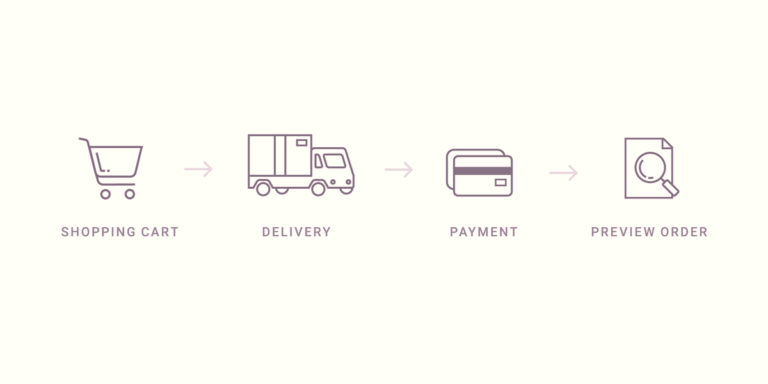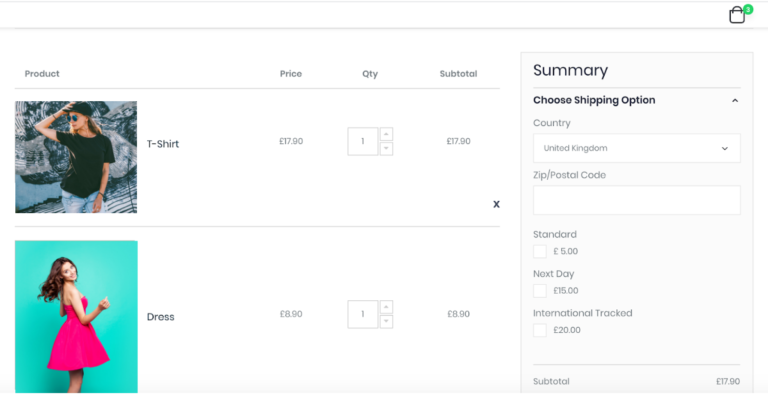Not all online shoppers can be converted, and there will always be some rate of cart abandonment; however, there are several reasons why consumers might drop off at the checkout.
The good news is that these are quite easy to rectify, which means there are practical things you can do to optimise this part of the customer journey and prevent intentional shoppers from slipping through your fingers.
These are our top 5 tips to increase eCommerce conversion at checkout and reduce cart abandonment.

The global average shopping cart abandonment rate is 69.57%
1. Offer the option to checkout as a guest.
When shoppers are ready to buy, any obstacle that they encounter can be a turn-off, and being asked to create an account before you buy something is a pain!
The best approach to reduce friction for new customers is to provide a quick and easy guest checkout so they can complete their purchase without the need to register upfront.
Present them with a registration box AFTER they’ve made their purchase. Customers are more likely to share information with you at this point if you have provided a seamless checkout experience.
Capturing their email can be part of the guest checkout so that even if they do drop off, you can still follow up with cart abandonment emails.


26% of cart abandonment is due to excess fields shoppers are expected to fill out.
2. Reduce the number of steps in the journey.
The more ‘non-essential’ things a shopper is asked to do the more friction is created. 26% of cart abandonment is due to excess fields that shoppers are expected to fill out.
Reduce the number of fields required fields wherever possible, for example, by using software that will autofill the correct address as they type. This makes it quicker and easier for the consumer and has the added benefit for the retailer of being precise, ensuring successful delivery.
Showing the progression of the checkout journey stages is very useful for the shopper, so they see which stage they’re at and how close to they are to completion. By combining steps, you can reduce the number of pages the customer has to advance through.
For example, combining personal details and delivery address in one page and then bringing them straight to a page for payment and review order page.

In Q2 of 2020 63% of all online purchases in the UK were made on mobile device.
3. Mobile first is a must.
63% of all 2020 UK online purchases were made on mobile as opposed to 32% on a computer and 5% on tablets.
With more mobile-only online shoppers than before its vital that eCommerce sites are optimised for mobile.
Forms on mobile need to be clear, with responsive elements to make it easier to checkout. Consider the functionality that works best for customers. Enhancing your website and checkout for mobile will have significant results on conversion rates.

The average large-sized ecommerce site can gain a 35.26% increase in conversion rate through better checkout design.
4. Combine delivery options at checkout.
The top reason why shoppers abandon carts is due to being confronted with unexpected costs at checkout, whether its taxes, payment fees or delivery costs.
However, that doesn’t that mean that offering free delivery is necessarily the best way to convert sales. Offering multiple delivery options at the checkout has been proven to ensure higher conversion rates than sites with only one or two delivery options.
Finding the right combination of options is a case of testing and measuring what works best.

“Experience is king and retailers need to invest and innovate to stay ahead of the competition by offering a wide range of choice including same day, next day, free delivery or collect from store.
Brands that raise the standard of delivery service in this way, will retain their edge and future proof their business by reducing cart abandonment, increasing conversion and attracting and retaining customers that might otherwise shop with their competitors.”
Rory O’Connor, CEO Scurri
Quote originally published here.

5. Optimise and track results.
To successfully optimise your eCommerce checkout, it’s important to determine what that conversion and abandonment rates are and understand the factors that are contributing to them.
All eCommerce stores experience some level of cart abandonment but when you start putting strategies in place to improve your rates, you can test their efficacy and measure the results. Use multivariate testing to see which combinations work best.
Ultimately the goal is to create the best possible online experience for your customer that will, in turn, boost your online revenue.

AUTHOR
Laura Roche Marketing Executive, Scurri
Laura Roche is a Marketing Executive at Scurri, managing social media and content marketing. Laura shares breaking news in the eCommerce space with our readers as well as sharing insights across the delivery and logistics landscape.

